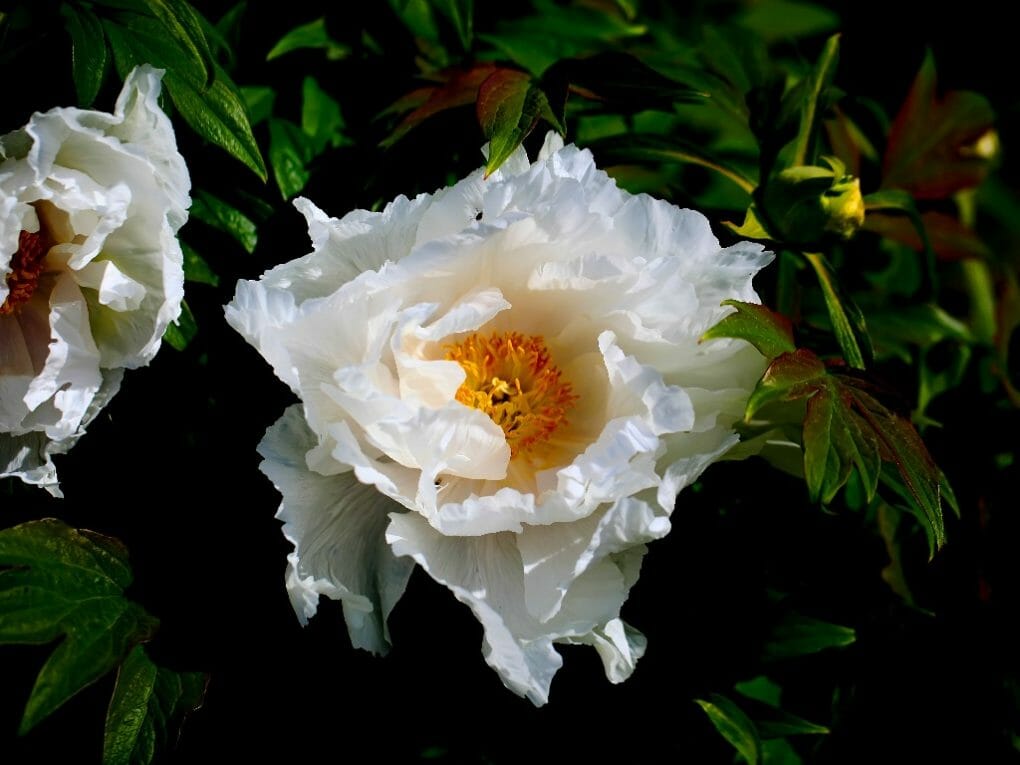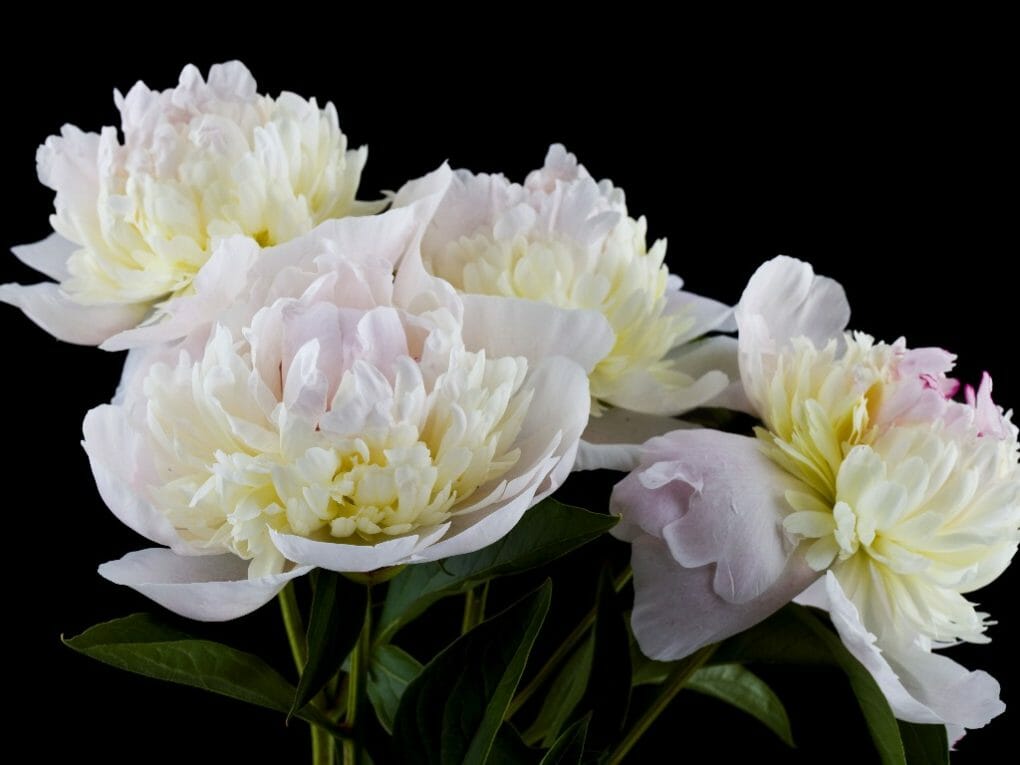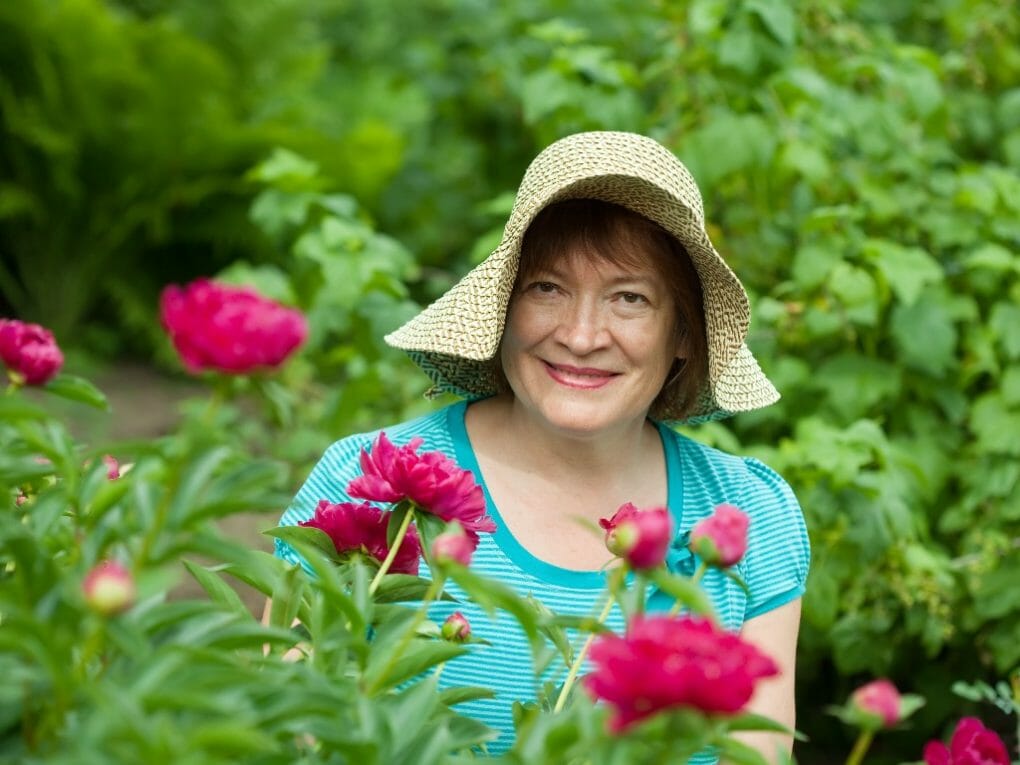Peony: Shade or Sun? | How Much Sun Do Peonies Need To Grow?

Peonies need enough sunlight to grow and bloom. They are a plant native to the colder parts of Europe and North America, so if you live in an area without direct sunlight, it may be difficult for them to thrive. To get the most out of their sun exposure, peonies should be placed where they will receive at least six hours of bright light per day. If possible, try to place them near a window or other outside source of natural light.
Once your peony plants have established roots and started growing new leaves, they will begin flowering after around 8-10 months. During this time, you can expect flowers with different colors, such as yellow or white. Peonies typically self-pollinate but may require assistance from another peony plant when blooming large specimens.
Table of Contents
Sunlight Requirement for Peonies
Most Peony flower varieties require 6 to 8 hours of sunlight per day. Unobstructed south-facing gardens without walls or other obstructions are preferred. Tree peonies and a few herbaceous cultivars are more tolerant of shade, preferring full morning sun and afternoon respite. Plant the appropriate variety for your region or utilize containers to maximize the conditions.
Herbaceous Peony Light Requirements
Herbaceous peonies typically require as much light as you can provide them, ideally 8 hours per day. When planted in more temperate climates, they can withstand plenty of full sun without developing problems from the heat. These stunning plants will produce more flowers the more light you give them.
Itoh Peony Light Requirements
Similar to Itoh Peonies, they require a full day of direct sunlight to produce as many large blooms as possible each season. When they have enough energy to do so—and that energy comes entirely from lots of direct sun exposure—they will flower more vigorously and for longer periods.
Tree Peony Lighting Requirements
Tree peonies differ slightly from other peonies. Intense direct sunlight during the flowering period can harm the flowers and significantly reduce their lifespan, even though they also appreciate plenty of sunlight to provide them with the energy to flower.
While Tree Peony flowers should last for about two weeks, those exposed to the harsh afternoon sun may only last a day or two before wilting up. They prefer a location with direct morning sun and some afternoon relief, whether from installed shade cloth positioned in the right direction or partial shade provided by an adjacent wall. These kinds also benefit from dappled shade.
Varieties
Varieties affect how much light these plants require. Some herbaceous cultivars or varieties, like Paeonia lactiflora “White Wings,” can tolerate a slightly shadier location than others. To determine the appropriate light levels, look at the label on your particular variety.
Can They Grow in the Full Shade?
Peonies can, in most cases, tolerate full shade and continue to grow without completely withering away; however, they will not reach their full potential under these conditions. They will not grow as full and lush, and as a result, the flowers and foliage will be negatively affected. You risk the plant developing a spindly appearance with few or no blooms at all. It is best to avoid growing peonies in the complete shade as this will ultimately cause the plants to become weaker overall.
Peony Cultivation in Low-Light Environments

Peonies can be grown even in partial shade. However, the plant’s growth and development won’t be as successful as they could be with proper lighting.
Choose a form that thrives in shady conditions. This will increase the likelihood that your plant will produce at least one flower.
Planting in containers is another option for those with their hearts set on a variety of full-sun peonies. Peonies can thrive in containers if given a sufficiently large pot, plenty of water, and some fertilizer.
A tray on wheels with stoppers will allow you to easily relocate your pot throughout the day to receive maximum sunlight. If you prune your peony flowers in the fall, they’ll stay in the pot until the following spring, so you won’t have to deal with this chore for very long.
It could be annoying to constantly lift and lower a heavy pot. However, the right light levels are the only way to guarantee flowers of a specific variety if you’re set on growing that type.
Influencing Factors for Light Requirements
Climate and Region
Your plants will receive much less direct sunlight in climates with cloudy and rainy spring and summer conditions. In these regions, the more sunlight exposure they receive throughout the day, preferably more than eight hours, the better.
In regions where spring arrives later and the sun’s intensity increases gradually, your peonies may bloom later. The sun’s direction and exposure vary slightly from region to region.
Hemisphere
Peonies are native to the northern hemisphere’s colder regions. Due to the different environmental conditions in the south, cultivating Peonies may be marginally more difficult.
In many regions of the southern hemisphere, sunlight is also more intense from early spring through late spring and summer, putting peonies under heat stress and limiting their flowering potential. A full eight hours of direct sunlight in the summer may be too intense for these regions, although they appreciate it.
All that matters is experimentation. If you notice that your peonies are struggling in the heat, move them to a shadier location the following year. The following season, if they are not producing enough flowers, relocate them to a location with more light.
Where Would Be the Ideal Location To Plant Peonies?
It is essential to growing peonies in an area with good air circulation; for instance, the corners of your yard are ideal locations to cultivate peonies in. Peonies are known for their large, showy flowers.
You should plant them a few feet away from the house to ensure adequate space for ventilation. Doing so will also provide shade; the house will shield you from the wind and other severe weather conditions.
It is best to avoid planting peonies close to other types of plants, such as trees, shrubs, or hedges. Peonies need their roots to have their own space to thrive. Keep an eye out for curled leaves on your peonies because this is a sign that they are experiencing some kind of stress.
When this occurs, make a mental note to check the weather to see if there has been a significant shift, a windstorm has just passed through, or another possibility is that they are not getting enough water.
The Finest Spots Within the Garden

Peonies, both herbaceous and intersectional, should be planted in gardens that face south and have soil that drains well. Herbaceous and intersectional Peonies need at least 12 hours of sunlight per day. Because of this, the plants will have sufficient exposure from morning until the afternoon to produce the blooms that we all know and love.
For their flowers to remain intact, tree peonies need to be shielded from the sun’s intense heat during the middle of the day and in the afternoon. It is recommended to plant them in beds that face east and have afternoon shade provided by a wall or tree. Even if you only have access to a location that receives direct sunlight all day, you can achieve the same results by positioning a shade cloth so that it casts a shadow over the plant in the afternoon.
In a location that receives dappled shade, it is possible to cultivate tree peonies and some herbaceous cultivars of peonies. On the other hand, they are not likely to flower as profusely as they would in a location with full sun. Producing such large flowers and intricate shapes requires a great deal of energy.
